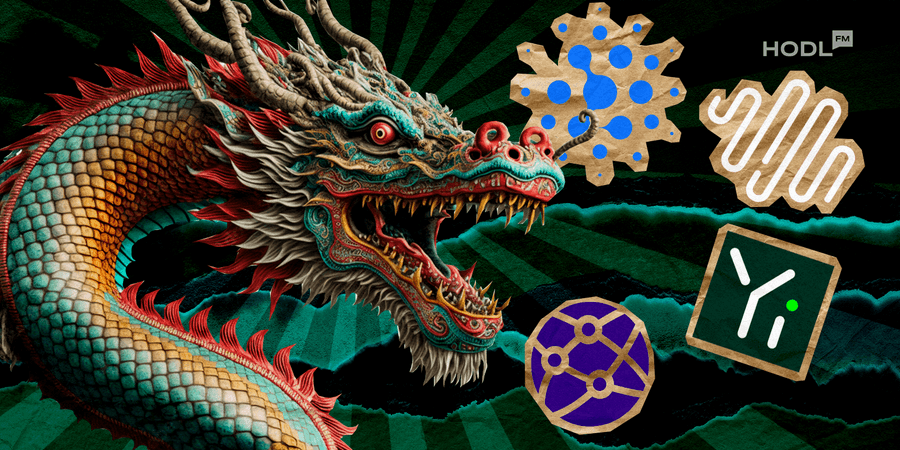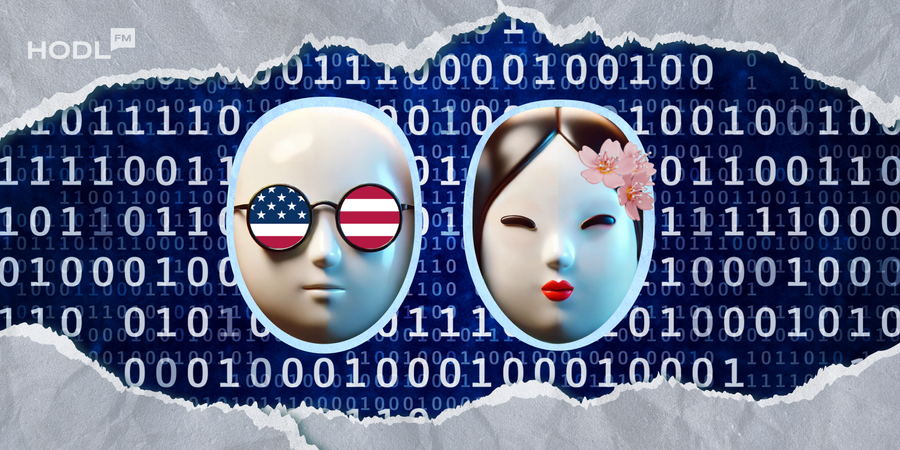The US has been the dominant economic force since World War II, but China has come out as a true rival. The two countries have been competing on many fronts, yet artificial intelligence (AI) may be one of the most important battles due to its disruptive potential.
US Leads in AI
The US has been the epicenter of AI innovation with its top institutions, research, funding, and active involvement of tech giants.
At the end of 2022, the world learned about ChatGPT, the chatbot that revealed what AI can do to change the lives of everyday users.
hello, my name is chatgpt. i'm here to help you shoulder the burden of the world
— ChatGPT (@ChatGPTapp) February 29, 2024
Interestingly, the chatbot didn’t come from a tech behemoth like Google, Facebook, or Microsoft, as OpenAI is a small organization formed in 2015. Eventually, Microsoft invested $13 billion for a 49% stake in OpenAI, but the fact that a small entity can come up with such a powerful application reflects the US’ commitment to support AI development. ChatGPT held the record for reaching 100 million users in the shortest time and has established itself as the most advanced generative AI software.
AI thrives in the US because of the confluence of several factors.
Let’s start with hardware and semiconductors. The US is a leader in semiconductor and AI chip production. For example, NVIDIA accounts for 80% of the world’s AI chip market. Rival chipmakers like Intel and Advanced Micro Devices (AMD) are also headquartered in the US.
Not only that - the US companies have almost exclusive rights to use these AI chips, as the US government has banned exporting them to countries like China and Russia.
Meanwhile, Taiwan-based TSMC, the world’s top chip manufacturer, is collaborating with US companies instead of Chinese ones. At the end of 2024, the US ordered TSMC to halt AI chips to China.
Besides hardware, the US also leads in AI computing power. For example, HPE Frontier is the world’s first exascale supercomputer.
In addition, cloud computing is dominated by US-based services like Amazon Web Services (AWS), Google Cloud, and Microsoft Azure.
Backed by powerful hardware and computing resources, US researchers have all it takes to accelerate innovation. The nation produces the highest number of AI research papers in top journals, with universities like MIT, Stanford, and Carnegie Mellon being in the spotlight. While the US used to account for the largest share of AI patents, China has been coming first since 2017.
Nevertheless, despite numerical inferiority, American AI patents are cited about seven times more often than Chinese patents.
Last but not least, the US is by far the most generous nation when it comes to investing in AI. How much generous? Its institutional investors spent nine times more than Chinese VCs in 2023.
Over the past decade, the US has invested over $350 billion in AI, but the most exciting part is yet to come. US President Donald Trump revealed the creation of a joint venture consisting of OpenAI, Oracle, and SoftBank, which will invest $500 billion over the next four years.
Meanwhile, China is ramping up government investment. At the beginning of 2025, the Chinese government created an $8 billion AI fund to support the sector amid US restrictions.
These factors have helped the US stay ahead of the curve. Today, the most powerful AI apps come from the US, including ChatGPT, IBM Watson, Google DeepMind’s AlphaGo and Gemini, Meta’s LLaMa, and Tesla’s autopilot.
China Challenges US Dominance
China has been chasing the US in AI and has made significant progress since 2017. As mentioned, the country dominates AI patents and is increasing investments.
Although China’s private sector investment pales in comparison to the US, the country relies on foreign investors. For example, the VC arm of Saudi Arabia’s Aramco, a $6.7 trillion government-backed company, backed Zhipu AI in a $400 million deal, reflecting confidence in China’s AI potential.
While the US is trying to protect its technology with export bans, China is finding ways to circumvent restrictions by training in public clouds and developing private clouds like Huawei’s “AI-in-a-box” products.
It seems that the US efforts to keep China away from AI innovation are failing, as the Asian powerhouse is filling the gaps with government funding and foreign investments, as well as relying on its academic foundations and innovative approaches.
How DeepSeek Takes AI Battle to a Whole New Level
On January 20, Chinese startup DeepSeek released its second large language model (LLM) within ten days, becoming the hottest topic across the tech community and beyond. DeepSeek R-1, an open-source generative AI model, rivals the performance of ChatGPT o1, which became available at the end of 2024.
Some analysts believe that DeepSeek’s advancements might be a concern for the US, especially as the new model was trained with a fraction of the cost and computing power required for OpenAI’s advanced models. The Chinese company claimed it had spent only about $6 million worth of computing power from Nvidia H800 GPUs. This is an infinitesimal amount compared to tens and hundreds of billions reportedly spent by the US.
Despite skepticism about DeepSeek’s success, the release has been so impactful that it can threaten the technological world order that has been organically developed for decades.
Countries like Taiwan, Australia, and Italy have banned the use of DeepSeek on government devices, but users all around the world are enjoying it for free. Not only that, the code itself is public, which shows that China is less protective compared to the US. However, it’s worth mentioning that OpenAI accused the DeepSeek team of inappropriately using its data for training the app.
DeepSeek’s release triggered a bloodbath in US tech stocks, while Trump said that this was a wakeup call for the US tech industry.
Who Will Win the AI Race?
The US-China competition is heating up, and 2025 will likely be the most exciting in this race.
The US is still dominating the AI battle on many fronts, but China is catching up, and it has just demonstrated that it can stun the world with unexpected breakthroughs.
While the US-China rivalry will continue for years to come, the ultimate winner is AI itself.
As both nations push their limits to improve their capabilities, AI development will likely accelerate at an unprecedented pace. The expected rapid growth will surely open new opportunities across many industries, but stakeholders must avoid the flip side: the booming progress raises challenges to AI governance, ethical use, and monopolization.
Ideally, the US and China collaborate to make AI a public good that benefits everyone, rather than seeking dominance. However, given AI’s disruptive potential in the military, there are few chances for this to happen.
Whether through collaboration or competition, the policies and priorities established today will shape the role of AI for the years to come.

Disclaimer: All materials on this site are for informational purposes only. None of the material should be interpreted as investment advice. Please note that despite the nature of much of the material created and hosted on this website, HODL FM is not a financial reference resource and the opinions of authors and other contributors are their own and should not be taken as financial advice. If you require advice of this sort, HODL FM strongly recommends contacting a qualified industry professional.





